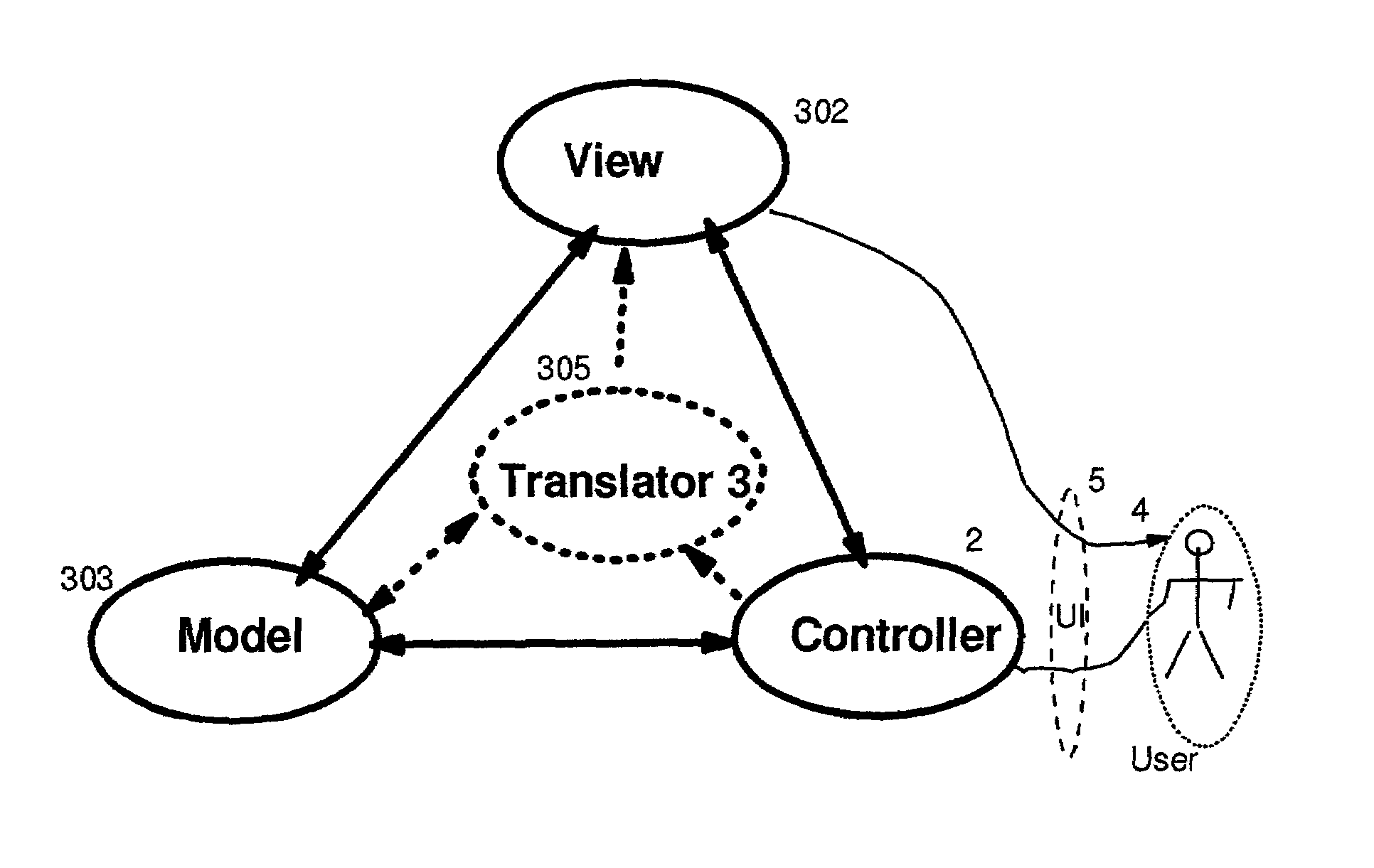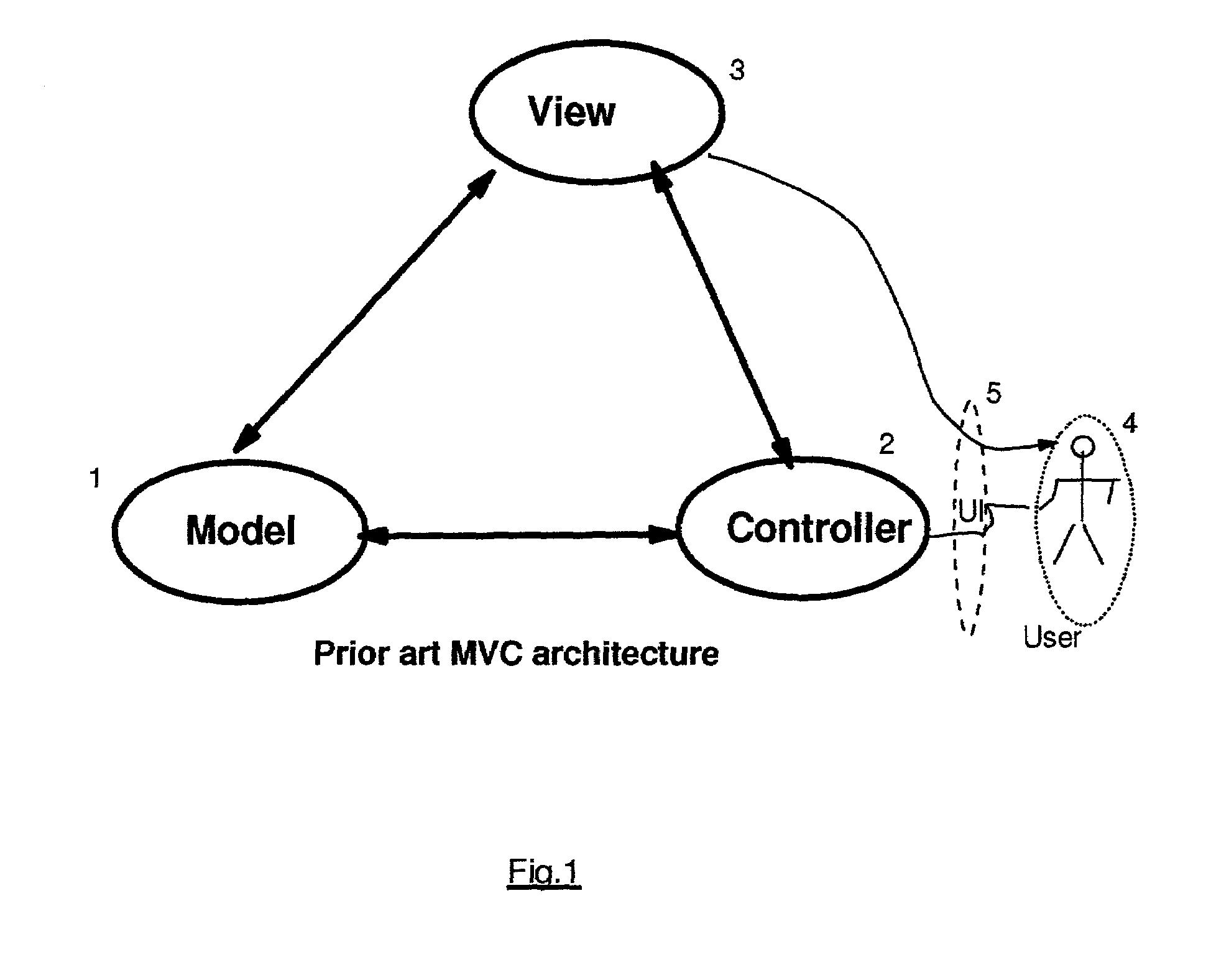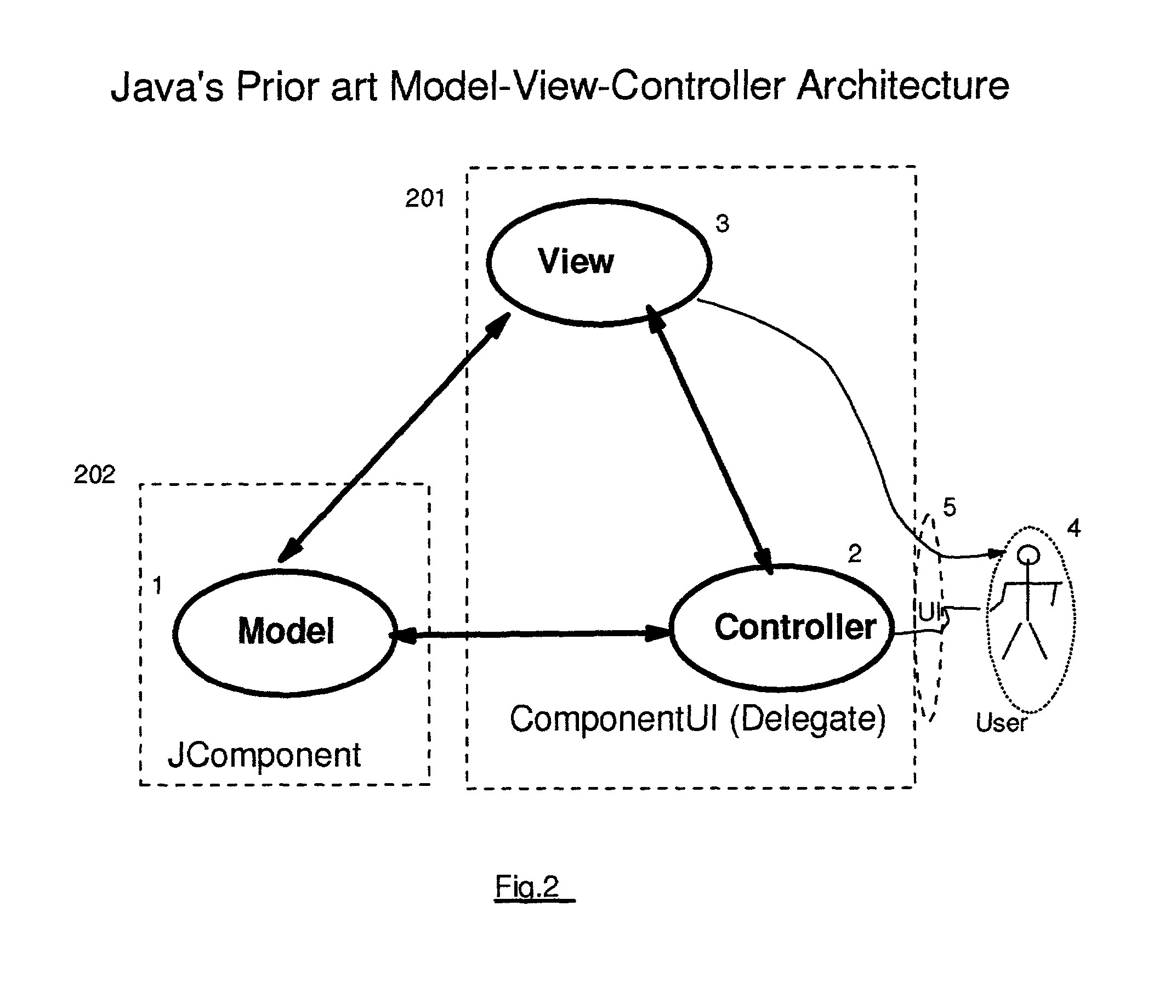Method, system and program product in a model-view-controller (MVC) programming architecture for inter-object communication with transformation
a programming architecture and model-view control technology, applied in the field of method, system and program product in the model-view-controller (mvc) programming architecture for inter-object communication with transformation, can solve the problems of ineffective summary information representation, cluttered and unusable list-type textual display, and inability to present all types of information in one view, so as to facilitate dynamic application and enhance communication
- Summary
- Abstract
- Description
- Claims
- Application Information
AI Technical Summary
Benefits of technology
Problems solved by technology
Method used
Image
Examples
Embodiment Construction
[0036]The present invention FIGS. 3A, 3B introduces a new translator object into the MVC architecture. Traditionally, MVC consisted of three objects FIG. 3A, the model object 303, the view object 302 and the controller object 2. These objects are programmably interconnected by an interface. The interface in one embodiment consisted of messages sent from one object to another object. The message was stimulated by events within the sending object. In FIG. 3A, the interface consists of translator objects (translator 1301 and translator 2304). The translator objects are responsible for transforming the information they receive from one object to a form that is useful for the next.
[0037]MVC objects may comprise variables and objects and processes. For example, the model comprises a model process that manipulates the values of model variables and model object. The basic types that are represented in the MVC objects are dependent on the programming language.
[0038]A MVC model will typically...
PUM
 Login to View More
Login to View More Abstract
Description
Claims
Application Information
 Login to View More
Login to View More - R&D
- Intellectual Property
- Life Sciences
- Materials
- Tech Scout
- Unparalleled Data Quality
- Higher Quality Content
- 60% Fewer Hallucinations
Browse by: Latest US Patents, China's latest patents, Technical Efficacy Thesaurus, Application Domain, Technology Topic, Popular Technical Reports.
© 2025 PatSnap. All rights reserved.Legal|Privacy policy|Modern Slavery Act Transparency Statement|Sitemap|About US| Contact US: help@patsnap.com



